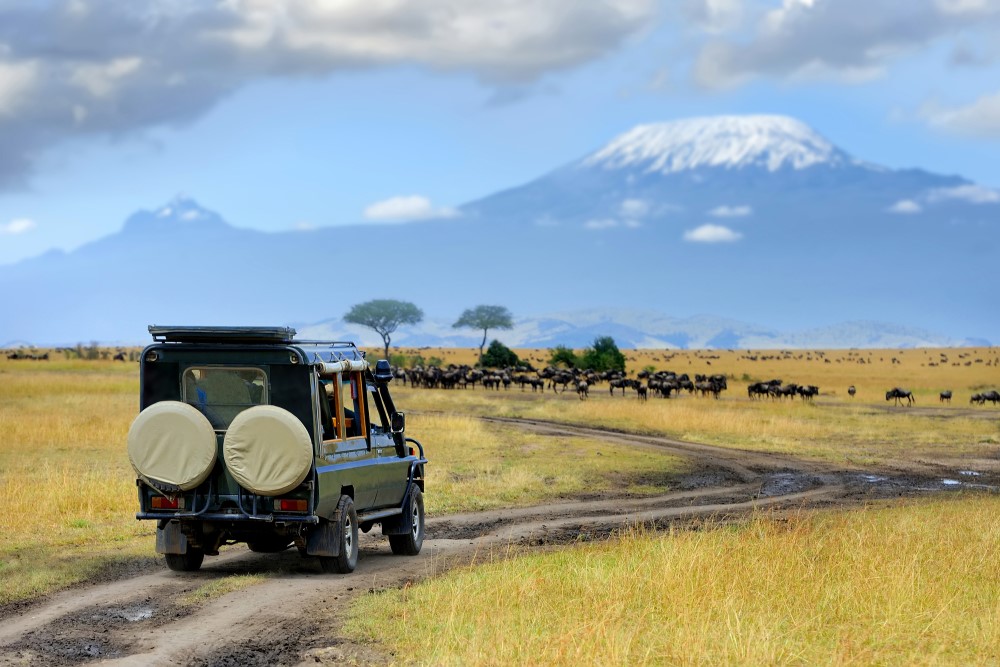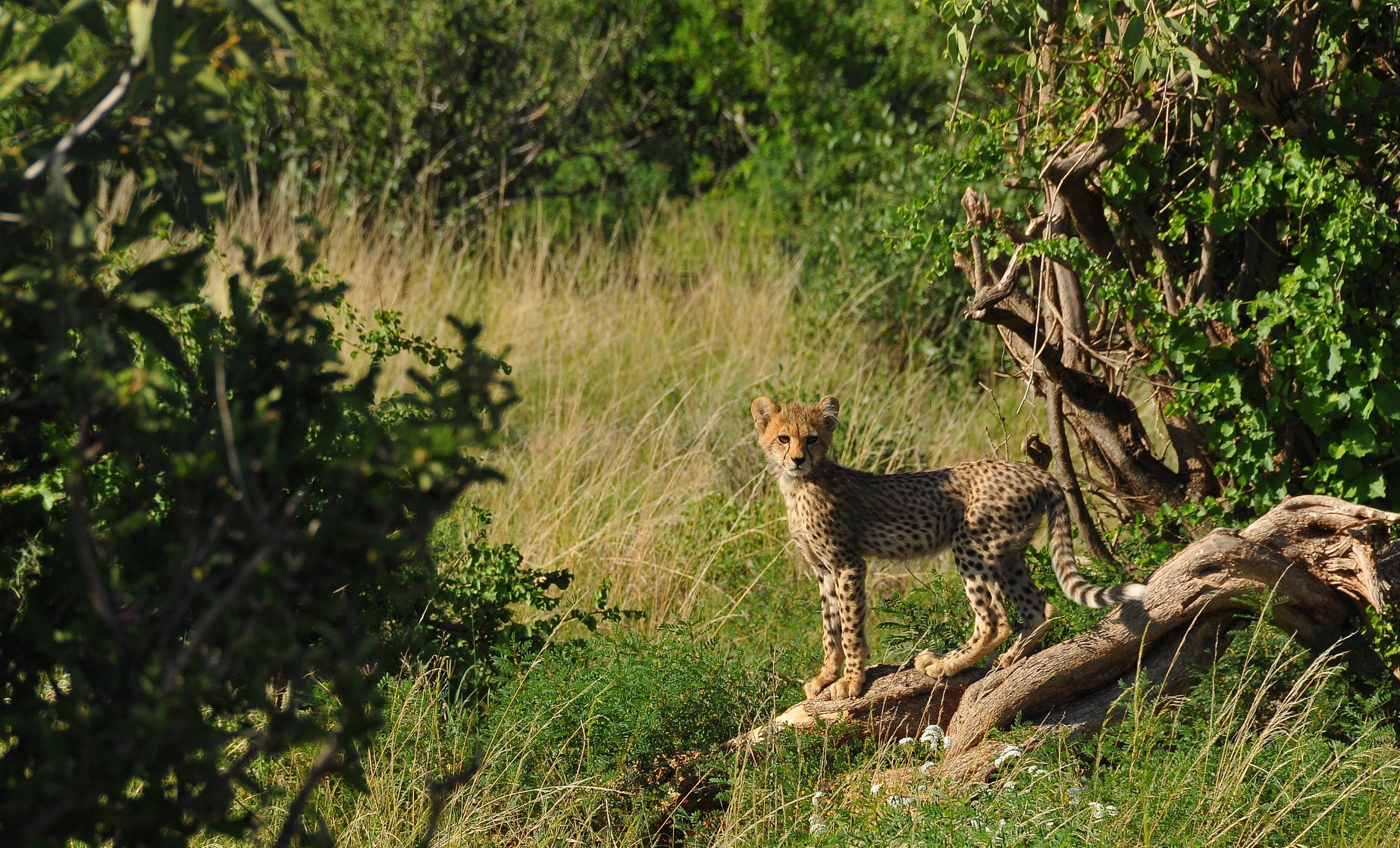Time for some “game hunting “as you visit Kenya the moniker of wildlife safaris. Wildlife safaris are no longer the “hunting grounds “ as seen on the National Geographic Channel or Discovery Channel but adventurous tourists are getting the same thrills by exploring the wilderness and seeing the animals.
Kenya is best known for its mountain highlands, savannah grasslands and the Great Rift Valley. Kenya Safari is your ticket to discover the inhabitants and their territory from close quarters. The highlight of the safari includes the big cats along with elephants, lions, buffalos and what steals the show is the annual wildebeest migration which is the ultimate hustle for survival. The game drives take you through the endless Savannah grasslands which are perfect camouflage for the inhabitants. The Jewel of Kenya Safari is the Masai Mara National Reserve. The park is known for the Big 5 and is also the densest region of the Savannahs. Lake Nakuru National Park is a paradise for birds including flamingos is also a field trip for your DSLRs. Ride those cantors and visit the Amboseli National Park where you can spot herds of Elephants grazing with Mount Kilimanjaro as the backdrop. The Samburu Game Reserve has its own Special Five where you can enjoy a camel safari adventure also.
Masai Mara National Park
Masai Mara has become a synonym with fantastic Kenyan safaris located in southwestern Kenya beside the Tanzanian borders. Masai Mari is known for its savannahs, river crossings and rolling hills. The reserve is often known as the eighth wonder of the world and is an unfenced reserve for the inhabitants and is also if put correctly the “mobile camping “site for the Great Wildebeest Migration which begins in the month of July to October as well as the home of the brave Masai soldiers. The famous game-spotting positions are the Musiara Swamp, Topi Plains and Rhino Ridge and you can also enjoy an off-road driving experience at the nearby conservancies. The reserve also boasts the highest population of big cats as well as a magnificent place for bird watching. Around the acacia trees, you can easily spot zebras and East African cheetahs. Crocodiles and hippos can be found in big groups around the Mara and Talek rivers. Besides the lions as the main carnivores, Masa Mara has a large number of Spotted Hyenas also. There are around four hundred different species of birds like vultures, hornbills, and crowned cranes. The plains of the reserve are the abode of the Masai giraffe as well as the rare nocturnal fox-eared bat.
Nairobi National Park
The next chapter of the Kenya Safari takes you to Nairobi National Park which was founded in the year 1946 and lies some seven kilometres south of Nairobi. The park is fenced from three sides and the southern periphery is left open for the migration of the inhabitants from the park to the neighbouring Kitengela plains. The park becomes the grazing ground for many herbivores at the time of the dry season. Nairobi though near the city is a prominent rhinoceros sanctuary. The wildlife population here includes lions, leopards, African buffalo, black rhinoceros and the list goes on. Cape chestnut, Kenya olive, and Acacia as well as many thorny bushes are part of the vegetation of the park. The rhino sanctuary at the park is a breeding and restating ground for many parks. The park also witnesses wildebeest and zebra migrations along the seasonal migratory European birds. Nairobi Animal Orphanage at the park is a rehabilitation centre for its inhabitants. The visitors can spot the oribi which is a unique species of antelope. Visit the Giraffe manor where you play guest to the Rothschild’s giraffes at the breakfast table. Take a trip to the Sheldrick Wildlife Trust and meet the abandoned elephants and know their stories as to how they were rescued by the keepers.
Amboseli National Park
The journey on the Kenya Safari proceeds towards the Amboseli National Park which was earlier known as the Masai Amboseli Game Reserve which lies in the South Constituency of Kajido County in Kenya. The credit for taking care of two swamps among the five swamps goes to the Amboseli National Park also takes care of the dry Pleistocene lake dating back to the Ice Age. The park is the ideal place where you can spot free-roaming elephants with an elegant view of Mount Kilimanjaro which is the tallest mountain in the world. Amboseli took good care of Echo who was the main subject of many documentaries and books. The park was also the home to the bull elephant Tim famous for tusks and size. Due to dry long months, the vegetation here is very scanty which makes it an ideal place to spot African wildlife. There are five different natural habitats to explore for visitors starting with the dry bed of Lake Amboseli to wetlands with sulphur springs and the savannahs. Here is your opportunity to meet and learn about the culture of the Maasai people. The most spectacular feature of the park is the underground supply of water which is naturally filtered at the foot of volcanic rocks.
Tsavo East and Tsavo West National Park
A must-visit on the bucket list of Kenya Safari is the two distinct parks of Tsavo East National park and Tsavo West National Park. which are located in the Coast Province of Kenya between Nairobi City and Mombasa. Tsavo covers an area of about twenty-two thousand square kilometres. The reason behind which divides the park into two is the railway line which passes from Mombasa to the inner regions of Kenya. Tsavo East is a little larger in size and has dry plains from where the Galana river passes by as for Tsavo West happens to be wet because of the swamps, LakeJipe and also the Mzima Springs. The main attractions besides the African Wildlife are the landscapes including Mudanda Rock which is a “stratified rock “ or a reservoir supplying water and an advantageous point to spot herds of elephants drinking water. The star wildlife attraction of Tsavo East is the Tsavo Lions whose grown males lack manes. Tsavo West National Park is also called the Land of Lava, Springs änd amazing sunsets. It is regarded as the land of Man eater lions as well as leopards, yellow baboons, gazelles and African wild dogs. The park is part of the route of migratory birds.


